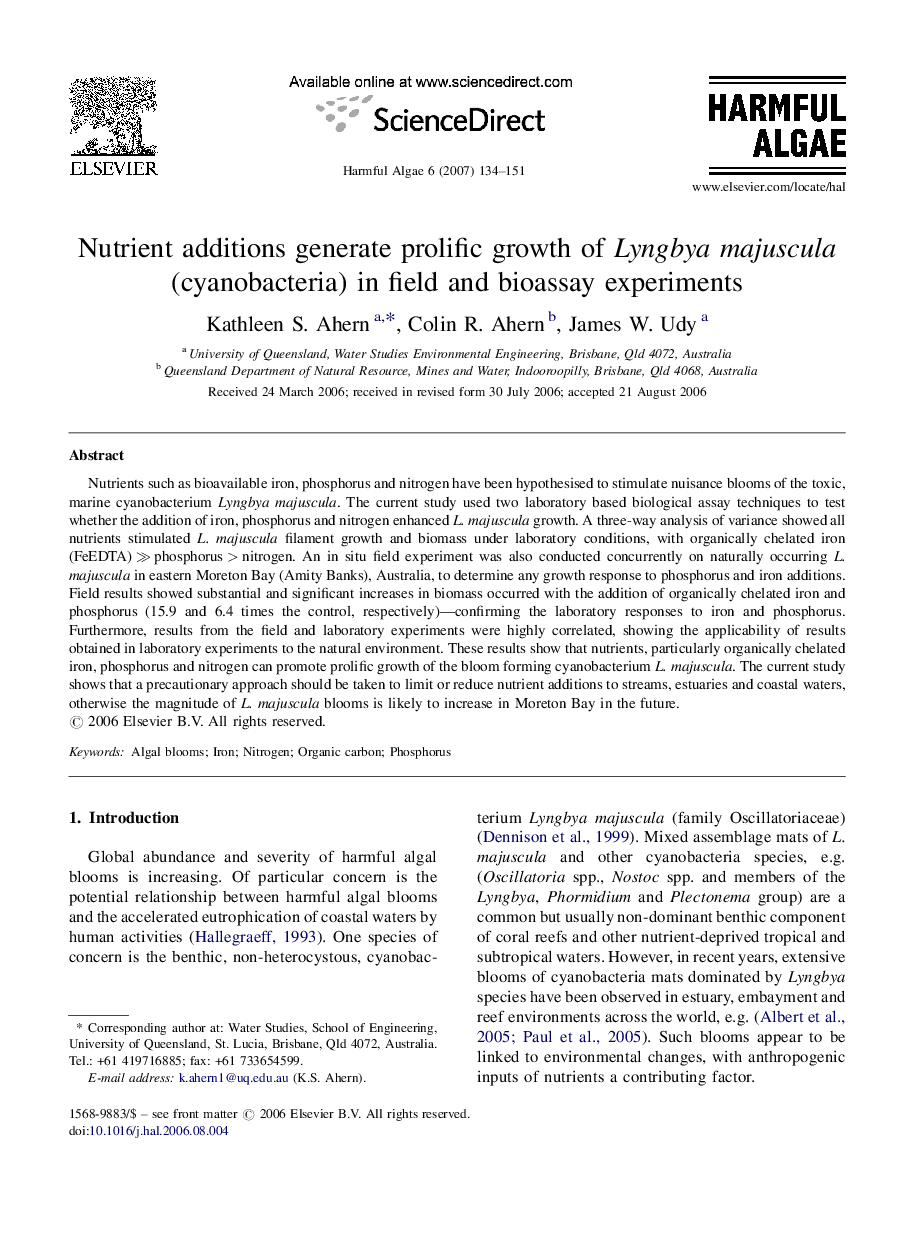| Article ID | Journal | Published Year | Pages | File Type |
|---|---|---|---|---|
| 4546171 | Harmful Algae | 2007 | 18 Pages |
Nutrients such as bioavailable iron, phosphorus and nitrogen have been hypothesised to stimulate nuisance blooms of the toxic, marine cyanobacterium Lyngbya majuscula. The current study used two laboratory based biological assay techniques to test whether the addition of iron, phosphorus and nitrogen enhanced L. majuscula growth. A three-way analysis of variance showed all nutrients stimulated L. majuscula filament growth and biomass under laboratory conditions, with organically chelated iron (FeEDTA) ≫ phosphorus > nitrogen. An in situ field experiment was also conducted concurrently on naturally occurring L. majuscula in eastern Moreton Bay (Amity Banks), Australia, to determine any growth response to phosphorus and iron additions. Field results showed substantial and significant increases in biomass occurred with the addition of organically chelated iron and phosphorus (15.9 and 6.4 times the control, respectively)—confirming the laboratory responses to iron and phosphorus. Furthermore, results from the field and laboratory experiments were highly correlated, showing the applicability of results obtained in laboratory experiments to the natural environment. These results show that nutrients, particularly organically chelated iron, phosphorus and nitrogen can promote prolific growth of the bloom forming cyanobacterium L. majuscula. The current study shows that a precautionary approach should be taken to limit or reduce nutrient additions to streams, estuaries and coastal waters, otherwise the magnitude of L. majuscula blooms is likely to increase in Moreton Bay in the future.
